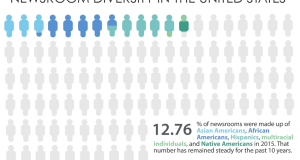Change is coming for the U.S. in 50 years if demographic projections pan out. Asians are on track to outnumber all other immigrant groups.
Asians are expected to make up 38 percent of all immigrants by 2065 — outpacing even Hispanics, the current largest immigrant group, according to a 2015 Pew study that looked broadly at the nation’s shifting population over the next half-century. Today Asians comprise 26 percent of immigrants while Hispanics represent 47 percent.
“It is a virtual certainty that within our lifetime, the United States will cease to have a single, identifiable racial majority in numerical terms,” said Frank Wu, a professor at the University of California Hastings College of Law. “That’s where we’re headed.”
Wu and other experts say how this will reshape American society remains to be seen. “This is a transition never before made by any human society,” he said. “It’s just never happened.”
Roland Hwang, an adjunct instructor at the University of Michigan, suggested the demographic changes won’t likely be felt immediately in corporate board rooms and other places of influence in society. “We are going to have to wait a bit longer,” he said.
ThePew Research Center, in its 2015 study, suggested the increased share of Asian immigrants among all immigrants means that education levels of the foreign-born population could rise sharply.
The report argues that Asian immigrants “tend to be better educated.” Among recent immigrants from Asia, the report said, 57 percent have completed college, compared with 13 percent for recent Mexican immigrants and 28 percent for immigrants from other Central or South American nations.
But the Asian American Center for Advancing Justice, a national affiliation of five civil rights nonprofit organizations that joined together under one name in 2013, said it’s “deeply concerned” about the findings.
The authors “paint a picture of Asian Americans as a model minority, having the highest income and educational attainment among racial groups,” the organization said in a statement. “These portrayals are overly simplistic.”
A March 2015 Census Bureau report on size and composition of the U.S. population between 2014 and 2060 summarizes the changes in age structure and shifts in the racial and ethnic composition of the population, including the total population as well as native and foreign born.
Other observations from Pew’s study found that the U.S. population is expected to increase from 319 to 417 million by 2060. One contributing factor being the rising age of the second generation – people born in the U.S. to at least one immigrant parent.
With people of color living longer and millennials being more likely to have children with someone of a different race, it’s more than likely that of the next generation, white children will be the minority.
Immigrants will continue to travel over, meaning one-in three Americans would be an immigrant or have immigrant parents, compared to one-in-four today.
 VOICES Publishing from the AAJA National Convention
VOICES Publishing from the AAJA National Convention








